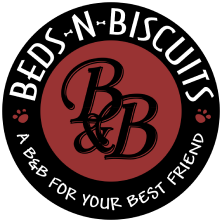As a dog owner, you’re likely familiar with the seemingly never-ending battle against dog hair. Shedding is a natural process for dogs, allowing them to get rid of old or damaged hair. However, excessive shedding can be a hassle, especially when it starts to cover your furniture, clothes, and floors. Here are some tips to help you manage and reduce dog shedding effectively.
Regular Brushing
One of the most effective ways to manage shedding is through regular brushing. Brushing not only helps in reducing shedding but also promotes healthy skin and coat by distributing natural oils. The frequency and type of brush depend on your dog’s breed and coat type. For short-haired dogs, a rubber brush or a bristle brush can help remove loose hair. Longer haired dogs will benefit from a slicker brush or a pin brush, which are ideal for detangling and removing dead hair.
Balanced Diet and Hydration
A dog’s diet plays a significant role in the health of its coat. Ensure your dog is eating high-quality food rich in Omega-3 and Omega-6 fattcy acids found in fish oil, flaxseed, and certain dog foods. These fatty acids help maintain healthy skin and a shiny coat. Essential nutrients like zinc, biotin, and vitamin E support skin health and reduce excessive shedding. Be sure to consult your veterinarian to determine the best diet for your dog.
Proper hydration is also crucial for maintaining healthy skin and coat. Make sure your dog has access to fresh water at all times. Dehydration can lead to dry skin, which can increase shedding.
Regular Grooming Appointments
Regular grooming appointments are essential for managing shedding. Our professional groomers at Beds-N-Biscuits can help you tackle your furry problem. Bathing plus de-shedding treatments using tools and techniques designed to remove loose undercoat hair effectively is one key to the solution. Trimming your dog’s coat to a manageable length is also extremely beneficial.
Environmental Control
Keeping your home clean can help manage shedding. Consider these tips:
Monitor for Health Issues
Excessive shedding can sometimes indicate underlying health problems such as allergies, skin infections, or hormonal imbalances. If you notice a sudden increase in shedding, bald patches, or other skin issues, consult your veterinarian promptly. That being said, sometimes shedding isn’t a result of any health issue, but is actually the cause of seasonal changes. Some breeds shed more during certain seasons, particularly in spring and fall. During these times, increase the frequency of brushing and grooming to manage the excess hair.
While shedding is a natural part of a dog’s life, it doesn’t have to be overwhelming. By incorporating these tips into your routine, you can manage and reduce shedding, keeping your home cleaner and your dog’s coat healthier. Remember, regular grooming and a balanced diet are key components in controlling shedding. If you ever feel overwhelmed, don’t hesitate to ask us how we can help!

